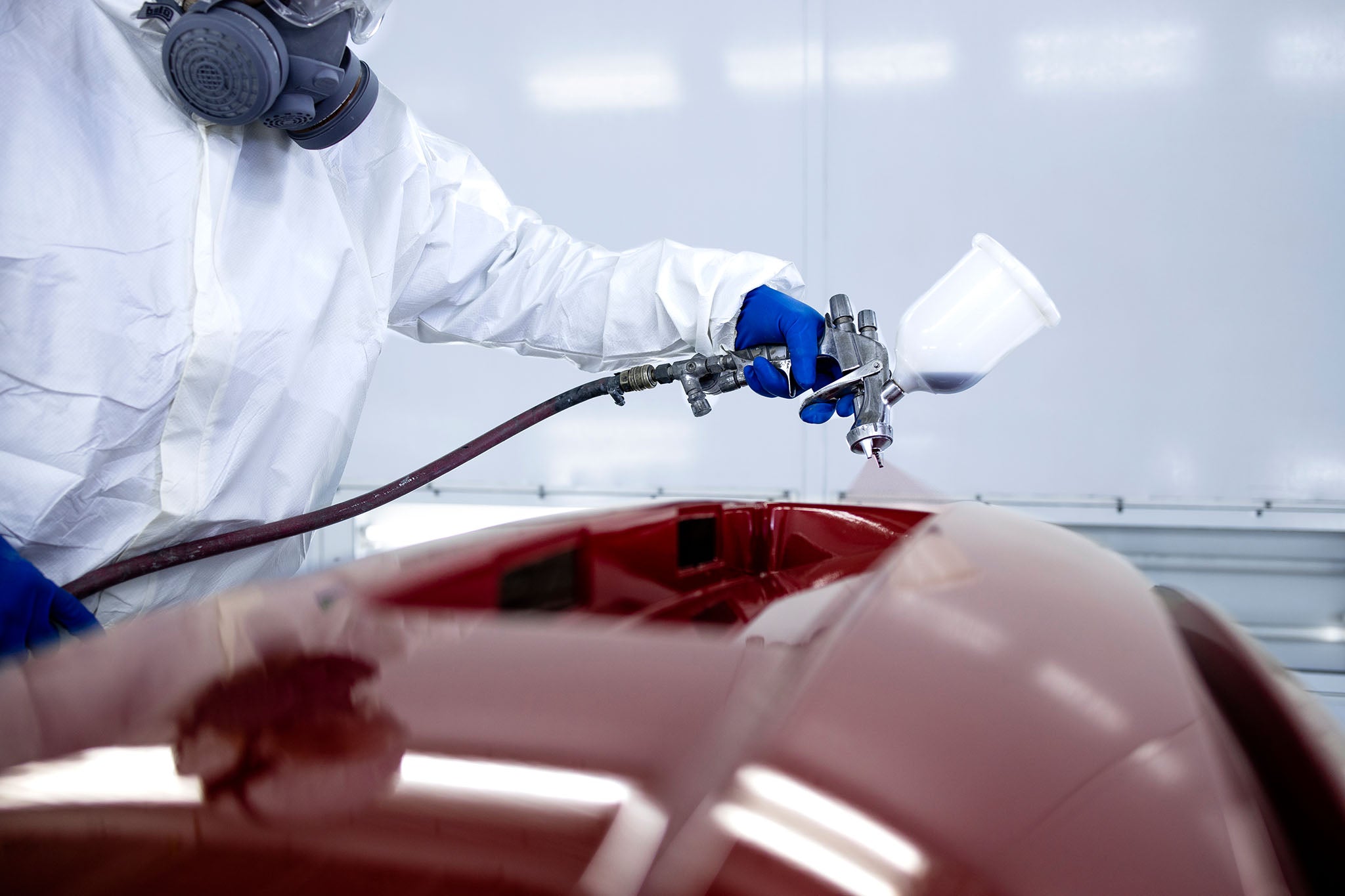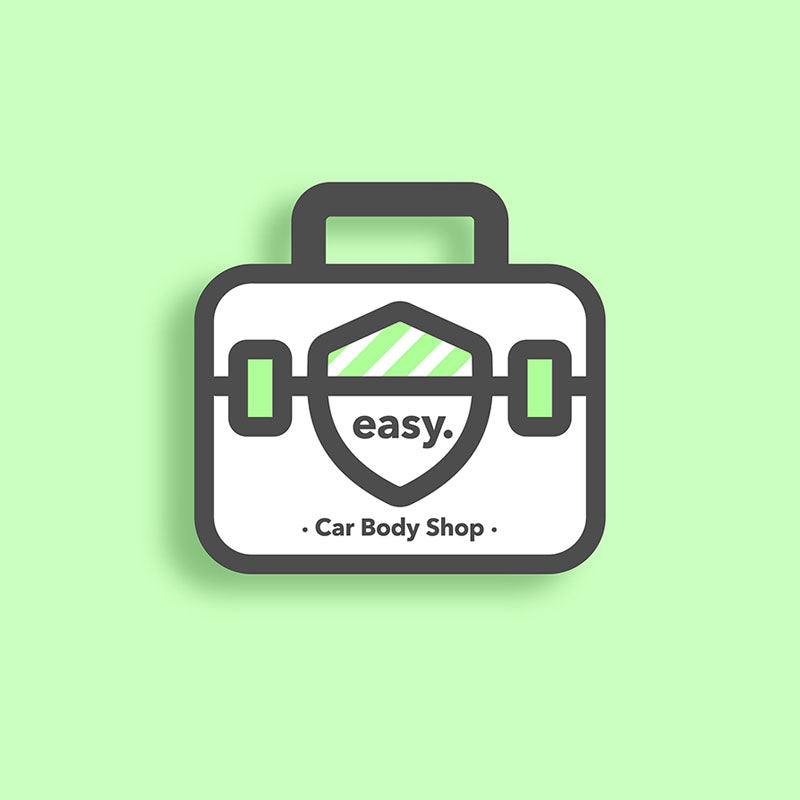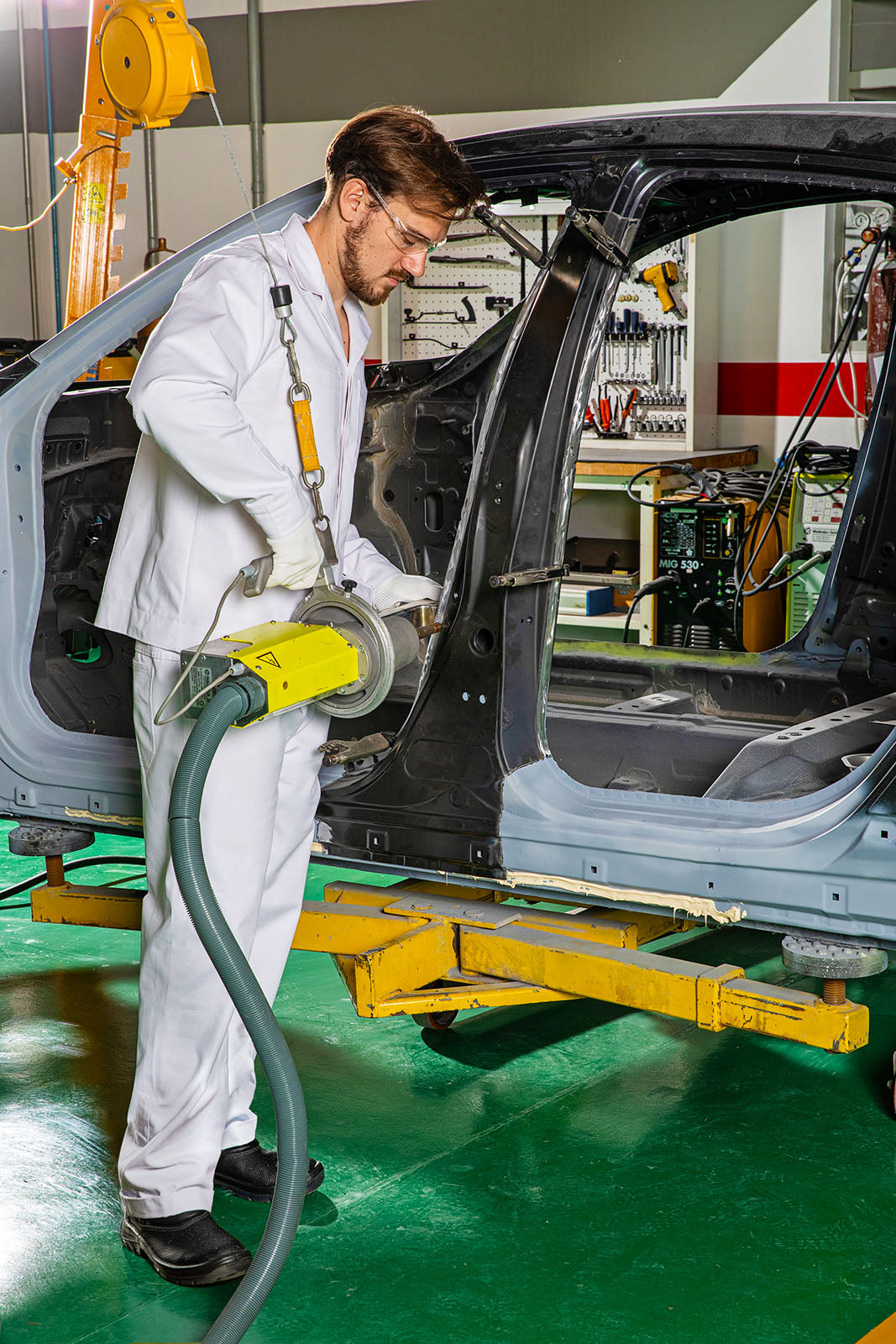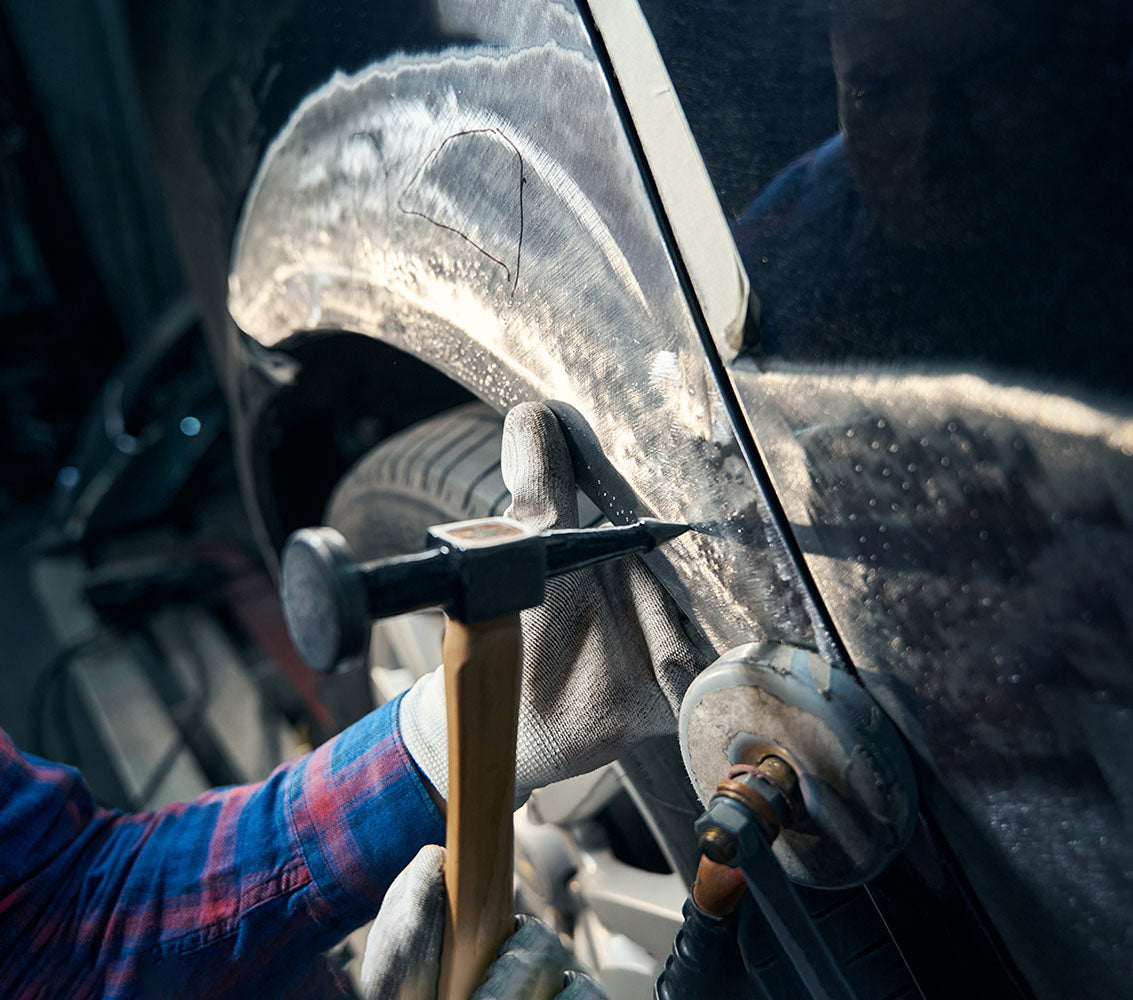
Car Body Shop Health and Safety Templates & Guidance
Pre-filled, editable health and safety templates for car body shops, bodywork repair businesses, and paintwork refinishing workshops — including risk assessments, policies, and more to keep your business safe, professional, and compliant.

Take Control of Health and Safety in Your Car Body Shop with Easy-to-Use Templates
Simplify health and safety management in your car body shop, bodywork repair business, or paintwork refinishing workshop with our editable templates, created specifically for the bodywork industry. These practical documents help accident repair centres and collision repair businesses stay compliant while protecting staff, customers, and contractors from the unique hazards of sanding, spraying, welding, hot work, and panel preparation.
Many templates come pre-filled with detailed, industry-relevant content — from car body shop risk assessments covering 2-pack isocyanate paints, dust hazards, and hot work, to health and safety policies, accident reporting forms, and compliance documents. With our ready-to-use tools, you can save time, reduce stress, and focus on running a safe, productive, and professional workshop while maintaining the highest standards of safety and compliance.

Polished Performance: Why Health and Safety is Essential for Car Bodywork Businesses
Running a car body shop means managing constant activity, hazardous substances, and powerful equipment in a busy workshop environment. With so many potential risks, effective health and safety isn’t just a legal requirement — it’s essential for protecting your team, customers, and business. Our tailored templates make it easier to put safety at the centre of your bodywork operations.
Protecting Staff from Workshop Hazards
Whether you manage an accident repair centre, a collision repair business, or a vehicle refinishing workshop, the risks are significant. Staff face hazards from spray booths, 2-pack isocyanate paints, sanding dust, welding and hot work, slips and trips, and manual handling of panels. Without clear procedures, proper training, and tailored risk assessments, accidents can happen quickly. Prioritising staff safety not only prevents injuries but also builds a more confident, productive team.
Keeping Customers and Visitors Safe
It’s not only employees at risk in a body shop. Customers collecting vehicles, delivery drivers, and contractors may also be exposed to hazards such as moving vehicles, spillages, or poorly marked walkways. Clear signage, good housekeeping, and visible safety measures demonstrate professionalism and build customer trust.
Compliance Builds Confidence
Strong safety standards — from fire prevention and COSHH compliance to safe storage of paints, solvents, and fillers — protect your business from costly enforcement action while reassuring customers their vehicle is in safe hands.
Reducing Legal and Financial Risks
Failing to meet health and safety requirements can result in fines, legal claims, or even closure. Using professional, pre-filled risk assessments and safety policies tailored for car body shops helps reduce risks, protect staff and customers, and keep operations compliant.
A Safer, More Resilient Body Shop
A culture of safety shows staff their well-being matters, reducing staff turnover and creating a motivated team. Well-prepared car body shops are also more resilient, able to adapt quickly to unexpected challenges while keeping people safe and maintaining customer confidence. Our ready-to-use health and safety templates for car body shops give you the tools to build that strong safety culture, helping your car bodywork businesses stay compliant, professional, and prepared for the future.
Top 3 Health and Safety Hazards in Car Body Shops:
-

Exposure to Harmful Substances
View ProductsCar body shops and paintwork refinishing workshops use paints, fillers, and solvents that release hazardous vapours and dust. Two-pack isocyanate paints are a leading cause of occupational asthma, while sanding panels and shaping filler produces fine dust that can damage the lungs and irritate skin. These risks are managed with spray booths fitted with local exhaust ventilation, use of air-fed respirators and dust masks, controls for staff exposed to isocyanates, dustless sanding equipment, and use of HEPA-filtered vacuums.
-

Fire and Hot Work Risks
View ProductsBodywork operations often involve welding, cutting, and grinding to repair or replace panels. These activities generate sparks and heat that can easily ignite waste materials, thinners, or nearby combustibles. Controls include welding only in designated areas, maintaining fire-resistant workspaces, removing flammable waste and materials before starting, assigning a fire watch where needed, keeping extinguishers close at hand, enforcing strict no-smoking rules across the workshop, staff training on emergency fire procedures, and more.
-

High-Voltage Hazards
View ProductsModern body shops increasingly deal with electric and hybrid vehicles when carrying out panel work or refinishing. Damaged or exposed high-voltage components present risks of electric shock, burns, or battery fires. Mitigation involves ensuring only trained staff work on EVs, following manufacturer-approved isolation procedures, using insulated tools and PPE, and storing or charging batteries safely in ventilated areas with fire suppression equipment available.

Why pay expensive consultant fees when you can manage health and safety yourself?
Improve your compliance while saving time and money by creating health and safety documents, customised to your business, yourself. Our health and safety range for car body shops, bodywork specialists, and paintwork refinishing workshops covers a suite of essential templates including health and safety policies, risk assessments, COSHH forms, fire safety documents, health and safety guidance, safety posters, and more.
Benefits of managing health and safety yourself...
-

Improve safety
Health and safety at work is about preventing accidents, incidents and ill-health by assessing the work environment, the activities within it, and taking appropriate action.
-

Ensure compliance
Our ready to use templates, many of which are pre-filled, will enable you to quickly increase your compliance to health and safety laws and regulations.
-

Save money
With health and safety consultants often charging upwards of £400 per day, there is a better way. Take control and save yourself time and money.

Car Body Shop Compliance: Overcoming Health and Safety Obstacles
For many small car body shop owners and car bodywork specialists, managing health and safety compliance can feel overwhelming. With limited staff, tight deadlines, and the daily pressure of keeping customers satisfied, finding the time and resources to properly manage health and safety can be a real challenge.
The intention to run a safe and compliant bodywork business is always there, but the practical demands — such as staff training on hazardous substances, COSHH assessments for paints and solvents, spray booth testing, welding and hot work safety checks, and maintaining up-to-date policies — can be daunting. This can sometimes lead to corners being cut, which not only puts staff and customers at risk but may also result in enforcement action, legal penalties, or reputational damage.
It’s a difficult balancing act, but it highlights the critical importance of health and safety in every car body shop — no matter the size.
At easyhealthandsafety, we make compliance easier for car body shops by providing ready-to-use health and safety templates and guidance. Our resources are simple to adapt, affordable, and designed to save time while helping you keep your workshop safe, professional, and fully compliant.
Frequently Asked Questions
Car Body Shop Health and Safety FAQs
How can I create a risk assessment for my car body shop business?
The easiest way to create a risk assessment for your car body shop is to use our editable Car Body Shop Risk Assessment Template, which comes pre-filled with industry-specific content that can be quickly adapted to your business.
To create a compliant risk assessment, start by listing each potential hazard in your body shop — such as paint spraying, sanding and filler preparation, welding and cutting, using power tools, and vehicle movement. Then identify who could be harmed (staff, contractors, visitors), describe how, and outline the control measures in place — including PPE, ventilation, extraction, and training. Each assessment should also name the person responsible for implementing and monitoring those controls.
Writing risk assessments from scratch can be time-consuming, which is why many body shop owners choose our Car Body Shop Risk Assessment Template — a pre-filled, editable document designed specifically for car bodywork operations.
For a complete compliance solution, our Car Body Shop Health and Safety Template Bundle provides over 60 professionally prepared health and safety documents — including risk assessments, policies, COSHH forms, and staff safety guidance — helping you manage risks effectively, stay compliant, and run a safe, professional body shop.
Do car body shops need to complete a risk assessment?
Yes — every car body shop must carry out risk assessments to identify and control health and safety hazards.
Under health and safety law, all car bodywork and refinishing businesses are required to complete suitable and sufficient risk assessments for their operations — including tasks such as paint spraying, sanding, welding, cutting, and handling hazardous substances. If your business employs five or more people, these assessments must also be recorded in writing. However, even if you have fewer than five employees, keeping written risk assessments is strongly recommended as best practice. Written records make it easier to demonstrate compliance to inspectors, insurers, and clients, and help ensure assessments are reviewed and updated regularly as your business or processes change.
Risk assessments help identify hazards such as paints and solvents, 2-pack isocyanates, dust exposure, fire risks, and manual handling, while showing how these can be controlled to keep staff, contractors, and customers safe. Our editable Car Body Shop Risk Assessment Template comes pre-filled with content relevant to typical bodywork operations and can be easily adapted to your business, making compliance quick and straightforward.
For an all-in-one compliance solution, our Car Body Shop Health and Safety Template Bundle includes a suite of over 60 essential health and safety documents to help you manage risks, meet legal requirements and maintain a safe, compliant, and professional body shop environment.
What are the main health and safety hazards in a car body shop?
Car body shops face risks from hazardous paints, sanding dust, welding, fire, manual handling, and vehicle movement.
Car bodywork businesses are high-risk environments, with hazards ranging from isocyanate paints and solvents to welding, grinding, and heavy lifting. Staff may be exposed to respiratory illnesses, burns, fire risks, or musculoskeletal injuries.
A Car Body Shop Risk Assessment helps identify these hazards and put controls in place to protect staff, contractors, and visitors. Our all-in-one Car Body Shop Health and Safety Template Bundle includes everything you need to manage these risks effectively.
Do car body shops need COSHH assessments for paints and solvents?
Yes — all hazardous substances must be assessed through COSHH risk assessments carried out in line with COSHH regulations.
Paints, solvents, fillers, thinners, and cleaning products are covered by the Control of Substances Hazardous to Health (COSHH) regulations. Car body shops must carry out COSHH assessments to identify risks and put safe handling measures in place. Our ready-to-use COSHH Risk Assessments and Car Body Shop Health and Safety Template Bundle include pre-completed examples for common products, saving time while ensuring compliance.
How can car body shops control exposure to isocyanate paints?
Use spray booths, local exhaust ventilation, air-fed masks, and regular health surveillance.
Two-pack isocyanate paints are one of the biggest health hazards in body shops, with a strong link to occupational asthma. To stay compliant, employers must provide spray booths with extraction, ensure air-fed respirators are worn and maintained, and carry out health surveillance such as lung function testing.
Our Car Body Shop Risk Assessment Template and COSHH Risk Assessments include pre-filled content for isocyanates, helping you implement the right controls quickly and effectively.
What fire safety requirements apply to car body shops?
All car body shops must complete a fire risk assessment and take steps to prevent and manage fire hazards.
With welding, grinding, flammable paints, and solvents in use, fire is a major risk in car body shops. The law requires a suitable and sufficient Fire Risk Assessment to be carried out, alongside measures such as extinguishers, alarms, good housekeeping, and staff training. Our Fire Risk Assessment Template and Essential Fire Safety Template Bundle provides the documents you need to stay compliant and protect your workshop, staff, and customers.
Do car body shops need a written health and safety policy?
Yes — if your car body shop has five or more employees, you must have a written health and safety policy in place.
Under health and safety law, every employer must have a policy for managing health and safety. If your body shop employs five or more people, this policy must be recorded in writing and shared with all staff. Even if you have fewer employees, having a written policy is strongly recommended, as it clearly demonstrates your commitment to safety, helps maintain consistency, and provides evidence of compliance during inspections or insurance reviews.
A good health and safety policy for a car body shop should outline responsibilities, arrangements, and procedures for managing risks such as hazardous substances, fire, welding, spray painting, and manual handling.
Creating one from scratch can take time, which is why our Health and Safety Policy Template — also included in the Car Body Shop Health and Safety Template Bundle — provides a pre-filled, editable document designed specifically for bodywork businesses. It helps you meet legal requirements quickly while maintaining a safe, professional, and compliant workshop.
How often should spray booths and extraction systems be tested?
Spray booths and LEV must be tested at least every 14 months under COSHH regulations.
Car body shops using spray booths or other local exhaust ventilation (LEV) systems must have them thoroughly examined and tested every 14 months by a competent person. This ensures harmful vapours and dusts are properly controlled.
Our COSHH Risk Assessments and Car Body Shop Risk Assessment Template help you document these checks and keep your records up to date.
How can body shops manage dust from sanding and filler preparation?
Dust extraction, PPE, wet sanding, and regular cleaning are essential controls.
Dust from sanding and filler shaping can damage the lungs and cause skin irritation. Employers must control exposure by providing dust extraction systems, suitable PPE (such as respirators), wet sanding methods, and safe cleaning practices.
Our Car Body Shop Risk Assessment Template includes detailed controls for dust hazards, helping you put compliant measures in place quickly.
What health and safety training do staff in car body shops need?
Staff in car body shops must be trained on hazardous substances, safe equipment use, fire safety, and manual handling.
Car body shop employees should receive health and safety training on COSHH for paints and solvents, spray booth operation, correct PPE use, welding and hot work safety, manual handling of panels, fire procedures, and general workshop safety. This ensures compliance with health and safety law and reduces the likelihood of accidents.
Our Car Body Shop Health and Safety Template Bundle includes H&S induction forms, risk assessments, and staff safety guidance that support training and demonstrate compliance.
What safety measures do car body shops need for electric and hybrid vehicles?
Car body shops must assess high-voltage, fire, and battery risks when working on electric and hybrid vehicles.
With more electric and hybrid vehicles arriving for bodywork and refinishing, car body shops need to consider the dangers of high-voltage components, electric shock, and lithium-ion battery fires. Staff must be trained to safely isolate systems, use insulated tools, and follow manufacturer guidance. Safe battery storage and charging areas with ventilation and fire suppression equipment are also essential.
Our Car Body Shop Risk Assessment Template includes EV-specific controls to help you stay compliant and protect your team.
What happens if a car body shop doesn’t comply with health and safety law?
You could face fines, enforcement notices, prosecution, reputational damage, and even closure.
Failure to comply with health and safety requirements can result in financial penalties, claims, or enforcement action from regulators. More importantly, it puts staff and customers at risk of serious harm.
Using our Car Body Shop Health and Safety Template Bundle — which includes a suite of over 60 essential health and safety documents — including policies, risk assessments, fire safety templates, and more — is a cost-effective way to stay compliant, reduce risk, and protect your business reputation.







